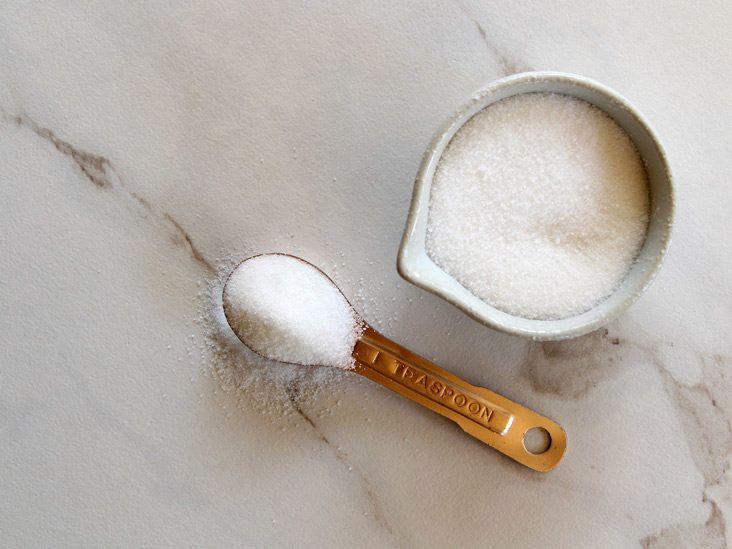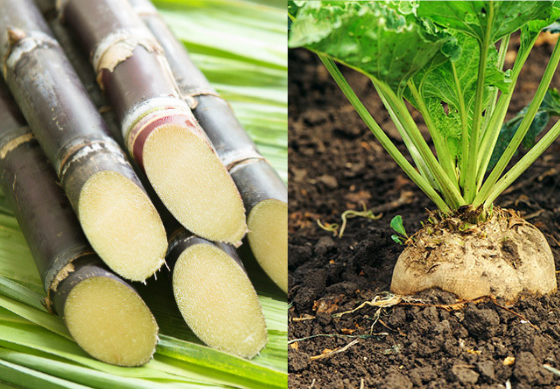Beet Sugar vs. Cane Sugar: Trick Distinctions You Should Know
The distinction in between beet sugar and cane sugar prolongs past their similar chemical make-ups; it encompasses their origins, production techniques, and possible health effects. While both sorts of sugar act as typical sweeteners, their different histories-- beet sugar arising in 19th century Europe and cane sugar tracing back to old Southeast Asia-- established the stage for a much deeper expedition of their production processes and dietary accounts. Comprehending these distinctions might affect customer choices in a market progressively concentrated on health and sustainability. What subtleties might even more notify your choices on these sugar?
Origins of Beet Sugar
Although beet sugar has become a considerable gamer in the worldwide sugar market, its beginnings can be mapped back to the early 19th century when European researchers started discovering different sources of sugar. The turning point took place in 1801 when German drug store Andreas Marggraf recognized sugar in the white beet, a discovery that prepared for subsequent research study and industrial applications.
The process of refining beet sugar was more progressed by his trainee, Franz Karl Achard, who established the first beet sugar manufacturing facility in Prussia in 1806. This innovation accompanied the Napoleonic Battles, throughout which trade interruptions resulted in a heightened demand for residential sugar manufacturing in Europe. beet sugar vs cane sugar. Because of this, beet sugar acquired traction, particularly in nations like France and Germany

Beginnings of Cane Sugar
Cane sugar, derived from the sugarcane plant, has a rich history that goes back hundreds of years, largely in tropical areas where the plant thrives. The earliest evidence of sugarcane cultivation can be mapped to New Guinea and Southeast Asia around 8,000 BCE. From these origins, expertise of sugarcane infect India, where it was initial processed into crystallized sugar by the fifth century CE.
As trade courses developed, sugarcane reached Persia, the Mediterranean, and eventually Europe, where it was initially pertained to as a luxury item. The expansion of sugar manufacturing happened during the Islamic Golden Era, which helped with the transfer of farming methods and advancements. By the 15th century, the demand for sugar rose, triggering European countries to establish plantations in the Caribbean and South America.
This shift not only changed the farming landscape of these regions yet also had substantial socio-economic implications, consisting of the reliance on confined labor. Cane sugar, when a rare product, came to be a staple in diet plans worldwide, laying the structure for the worldwide sugar market we identify today. Comprehending its origins is crucial for valuing cane sugar's influence on culinary practices and economic climates.
Production Processes
The manufacturing for both beet sugar and cane sugar entail numerous important actions that change raw products into the crystalline sweeteners frequently utilized today. For beet sugar, the procedure begins with gathering sugar beetss, which are after that washed and cut right into slim cossettes. These cossettes are subjected to warm water removal, permitting the sugar to liquify.
In contrast, cane sugar manufacturing starts with the harvesting of sugarcane, which is squashed to draw out the juice. While both processes share resemblances, the resource product and specific approaches result in distinct features for beet and cane sugars, influencing the preferences of customers and manufacturers alike.
Nutritional Comparison
When comparing the dietary profiles of beet sugar and cane sugar, it is vital to identify that both sweeteners are mostly made up of sucrose, leading to similar energy content and caloric values (beet sugar vs cane sugar). Both sorts of sugar usually consist of concerning 4 calories per gram, making them equivalent in terms of power stipulation
In addition to sucrose, both beet and cane sugars consist of trace quantities of minerals and vitamins; however, these amounts are negligible and do not dramatically add to daily dietary read more demands. As an example, both might include minute degrees of calcium, magnesium, and potassium, yet these are not present in enough total up to use any considerable health and wellness advantages.
Furthermore, the lack of fiber in both sorts of sugar highlights their duty as pure sweeteners rather than resources of nourishment. beet sugar vs cane sugar. While they may give a quick source of power, their absence of essential nutrients highlights the significance of moderation in intake
Inevitably, from a totally dietary standpoint, beet sugar and cane sugar are essentially indistinguishable, making the choice in between both largely reliant on variables such as taste preference, accessibility, and environmental considerations.
Health And Wellness Implications
While beet sugar and cane sugar share comparable nutritional profiles, their health ramifications necessitate factor to consider past simple composition. Both sugars are primarily made up of sucrose, which can bring about comparable metabolic results; too much intake can add to obesity, diabetes mellitus, and heart diseases. However, the resource and production processes of these sugars may affect their general health and wellness impact.
Beet sugar is commonly produced using debatable chemicals, such as phosphoric acid, which might leave trace deposits. On the other hand, cane sugar undertakes a much more typical refining process, which has a tendency to be less chemical-intensive. The presence of these residues in beet sugar might elevate issues for delicate populations or those seeking to minimize chemical direct exposure.

Additionally, the growing methods of sugar beetss and sugar cane may differ, with the previous frequently including more intensive agricultural practices that can influence soil health and wellness and biodiversity. This farming context might influence the broader health and wellness effects of sugar intake on a populace level.
Eventually, while both beet and cane sugars offer imp source comparable functions in the diet, consumers should think about the nuances of production and sourcing when making educated options about their sugar intake.
Verdict

While both types of sugar offer as usual sweeteners, their different histories-- beet sugar arising in 19th century Europe this post and cane sugar mapping back to old Southeast Asia-- set the stage for a deeper exploration of their production processes and nutritional accounts.The process of refining beet sugar was further advanced by his trainee, Franz Karl Achard, who developed the first beet sugar factory in Prussia in 1806.The manufacturing processes for both beet sugar and cane sugar involve a number of important steps that transform raw materials into the crystalline sweeteners commonly utilized today. For beet sugar, the process begins with harvesting sugar beetss, which are then cleaned and sliced into thin cossettes. The removal processes better identify the 2, with beet sugar making use of hot water extraction and cane sugar including squashing.